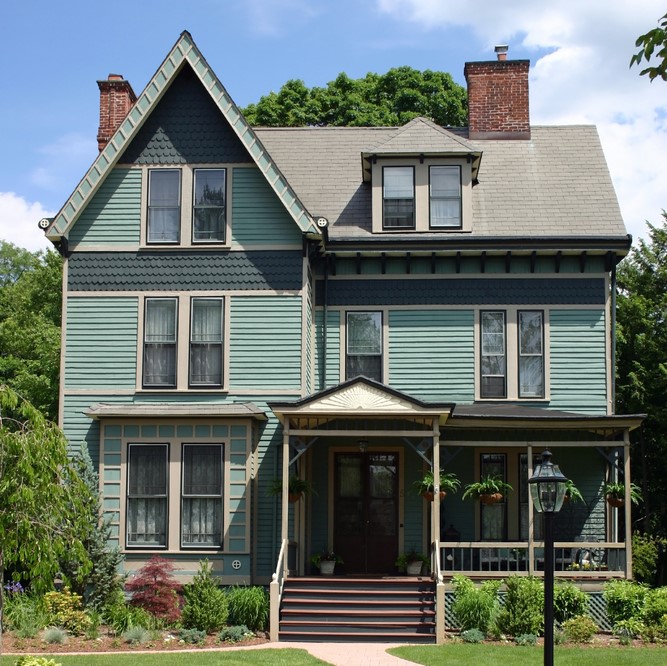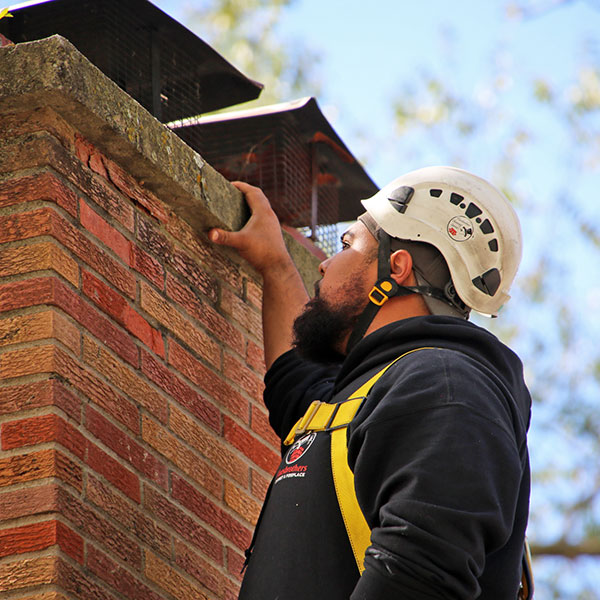 A chimney that receives regular maintenance should give many years of safe and efficient service. But once a chimney passes into “old age,” i.e., 50 or 75 or more years old, certain problems should be expected. Still, with proper repairs and maybe some alterations, chimneys in historic homes can work as well as their much younger counterparts.
A chimney that receives regular maintenance should give many years of safe and efficient service. But once a chimney passes into “old age,” i.e., 50 or 75 or more years old, certain problems should be expected. Still, with proper repairs and maybe some alterations, chimneys in historic homes can work as well as their much younger counterparts.
The chimney structure
The bricks and mortar that make up historic chimneys are old. That means there may be signs of cracking and decay in parts of the masonry or throughout the system.
Loose, deteriorated bricks (called “spalling”) and decayed mortar that holds the bricks together can eventually cause an older chimney to begin leaning to one side and possibly collapse, causing serious damage.
A professional chimney inspector can tell you if your chimney has masonry damage needing
to be addressed through repairs such as brick repair, tuckpointing or chimney rebuilding.
Issues in the flue
Chimneys in homes built in the 1800s and early 1900s did not have chimney liners or flue liners. Commonly made of clay tile, stainless steel or a cast-in-place compound, chimney liners protect the interior masonry from mold-causing moisture and damage from heat and acidic compounds such as creosote, a byproduct of wood combustion.
With no chimney liner, toxic flue gases may seep into parts of the home where people and pets can breathe them. Of particular concern is carbon monoxide, which is invisible and odorless – and known to be potentially fatal when inhaled.
If your historic chimney has no liner or one that’s been in place for many years, a certified chimney services technician can perform installations and repairs of all types of liners.
Chimney damage from house-settling
Houses settle periodically, and homes in the “historic” age bracket have done a lot of settling over the years. This seemingly subtle movement can cause cracking within a chimney’s masonry, leading the way to water infiltration.
When moisture moves into gaps in bricks and mortar, freezing temperatures will make it expand and cause larger cracks and greater decomposition. The freeze-thaw cycles common in southern New Hampshire and other cold-weather regions ensure that damage continues until the chimney is at risk of collapse.
Problems with the chimney footing also can cause shifting of the structure – an issue often uncovered when servicing historic chimneys.
Obstructions and creosote buildup
Chimneys of all ages can harbor dangerous drafting obstructions and excess creosote, but older chimneys are particularly problematic in this area.
Without a sturdy chimney cap, debris from nearby trees as well as the nesting material of small animals and the animals themselves when they die in the chimney can block the smooth drafting of smoke.
Creosote, which forms every time a wood fire is burned, is highly flammable and responsible for most chimney fires in the U.S. each year. Creosote also can build up to the point that it causes venting problems.
Professional chimney sweep services performed annually will significantly reduce the amount of creosote in your historic chimney’s flue. Having a quality chimney cap installed will keep debris out of your chimney.
 Historic chimney inspections
Historic chimney inspections
If it’s been more than a year (and certainly if it’s been decades) since your historic chimney was last inspected, now is the time to arrange this service. Your inspector will evaluate the entire system and its components and let you know what chimney repairs are needed to restore safety and top performance.
Black Moose Chimney of Antrim, NH, provides CSIA-certified chimney sweeping, chimney inspections and historic chimney restorations and repairs. Get the right solutions by calling New Hampshire’s fireplace and chimney experts at
(603) 525-7905.



